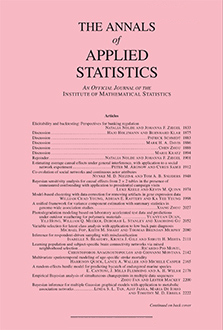Abstract
Deeds, or charters, dealing with property rights, provide a continuous documentation which can be used by historians to study the evolution of social, economic and political changes. This study is concerned with charters (written in Latin) dating from the tenth through early fourteenth centuries in England. Of these, at least one million were left undated, largely due to administrative changes introduced by William the Conqueror in 1066. Correctly dating such charters is of vital importance in the study of English medieval history. This paper is concerned with computer-automated statistical methods for dating such document collections, with the goal of reducing the considerable efforts required to date them manually and of improving the accuracy of assigned dates. Proposed methods are based on such data as the variation over time of word and phrase usage, and on measures of distance between documents. The extensive (and dated) Documents of Early England Data Set (DEEDS) maintained at the University of Toronto was used for this purpose.
Citation
Gelila Tilahun. Andrey Feuerverger. Michael Gervers. "Dating medieval English charters." Ann. Appl. Stat. 6 (4) 1615 - 1640, December 2012. https://doi.org/10.1214/12-AOAS566
Information





